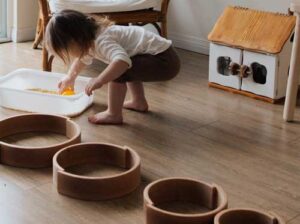Daycare standards play a crucial role in determining the overall daycare cost by enforcing strict guidelines for safety, staff qualifications, and facility quality. Compliance with these standards requires daycares to invest in proper staff training, safety equipment, and facility maintenance. For example, regulations on child-to-staff ratios mean daycares must hire enough qualified caregivers to meet these requirements. Facilities must also maintain clean and safe environments, which may include regular inspections, safety audits, and equipment upgrades. Meeting educational standards requires purchasing age-appropriate learning materials and ensuring staff are trained in early childhood education. While adhering to these standards increases operational costs, it guarantees that children are cared for in a safe, educational, and nurturing environment. Parents can feel confident that their investment in daycare fees is supporting high-quality care and safety.
Daycare standards offer significant benefits for both parents and children by ensuring quality, safety, and consistency in childcare. For parents, knowing that a daycare meets established guidelines provides peace of mind. Standards for staff qualifications, safety protocols, and educational practices ensure that children receive professional care and a structured learning experience. Children benefit from environments that prioritize safety, hygiene, and developmental milestones. For example, safety standards reduce the risk of accidents, while educational standards ensure children are engaged in activities that promote cognitive and social growth. Health guidelines, such as sanitation practices and immunization requirements, help protect children from illnesses. Although meeting these standards contributes to daycare cost, the assurance of quality care and safety makes it a worthwhile investment for parents seeking dependable childcare services.
Daycare standards help childcare centers provide better services by setting clear guidelines for safety, education, and care practices. These standards require daycares to maintain safe environments, hire qualified staff, and implement structured educational programs. Compliance ensures that caregivers are trained to handle emergencies, manage behavior, and support children’s development. For example, standards for hygiene and cleanliness reduce the spread of illness, ensuring consistent care. Educational guidelines help daycares create curriculum plans that support cognitive and social growth. Meeting these standards also encourages continuous improvement through regular inspections and professional development for staff. While adhering to standards increases daycare costs, it ensures children receive high-quality care and education. Daycares that follow these guidelines are better equipped to nurture children’s physical, emotional, and intellectual development.
Adhering to daycare standards gives childcare centers a competitive edge by demonstrating a commitment to quality and safety. Parents are more likely to choose daycares that meet or exceed established guidelines for care, education, and safety. Centers that follow these standards can market themselves as reliable and professional, attracting families who prioritize high-quality childcare. Meeting standards for staff training, facility safety, and educational programs builds trust and credibility. Additionally, compliance with health and safety regulations helps daycares maintain a positive reputation and avoid potential legal issues. By investing in meeting these standards, daycares can justify higher fees and differentiate themselves from competitors who may not follow strict guidelines. This commitment to quality not only increases enrollment but also fosters long-term loyalty from families seeking dependable childcare services.
Daycare standards are essential for ensuring safe, educational, and high-quality childcare services. While these standards contribute to daycare costs, they offer significant benefits for children and parents. Choosing a daycare that follows established guidelines ensures a nurturing and reliable environment for children’s growth and development.





